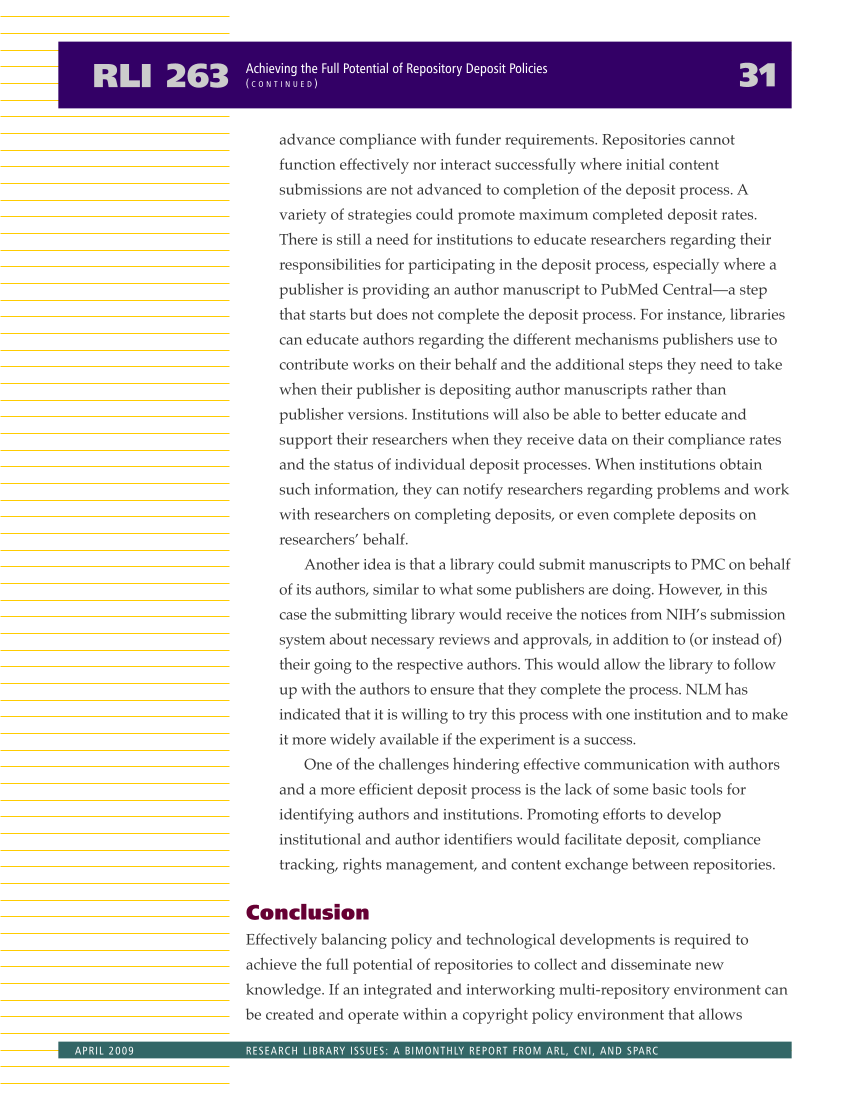advance compliance with funder requirements. Repositories cannot function effectively nor interact successfully where initial content submissions are not advanced to completion of the deposit process. A variety of strategies could promote maximum completed deposit rates. There is still a need for institutions to educate researchers regarding their responsibilities for participating in the deposit process, especially where a publisher is providing an author manuscript to PubMed Central—a step that starts but does not complete the deposit process. For instance, libraries can educate authors regarding the different mechanisms publishers use to contribute works on their behalf and the additional steps they need to take when their publisher is depositing author manuscripts rather than publisher versions. Institutions will also be able to better educate and support their researchers when they receive data on their compliance rates and the status of individual deposit processes. When institutions obtain such information, they can notify researchers regarding problems and work with researchers on completing deposits, or even complete deposits on researchers’ behalf. Another idea is that a library could submit manuscripts to PMC on behalf of its authors, similar to what some publishers are doing. However, in this case the submitting library would receive the notices from NIH’s submission system about necessary reviews and approvals, in addition to (or instead of) their going to the respective authors. This would allow the library to follow up with the authors to ensure that they complete the process. NLM has indicated that it is willing to try this process with one institution and to make it more widely available if the experiment is a success. One of the challenges hindering effective communication with authors and a more efficient deposit process is the lack of some basic tools for identifying authors and institutions. Promoting efforts to develop institutional and author identifiers would facilitate deposit, compliance tracking, rights management, and content exchange between repositories. Conclusion Effectively balancing policy and technological developments is required to achieve the full potential of repositories to collect and disseminate new knowledge. If an integrated and interworking multi-repository environment can be created and operate within a copyright policy environment that allows RLI 263 31 Achieving the Full Potential of Repository Deposit Policies ( C O N T I N U E D ) APRIL 2009 RESEARCH LIBRARY ISSUES: A BIMONTHLY REPORT FROM ARL, CNI, AND SPARC











































